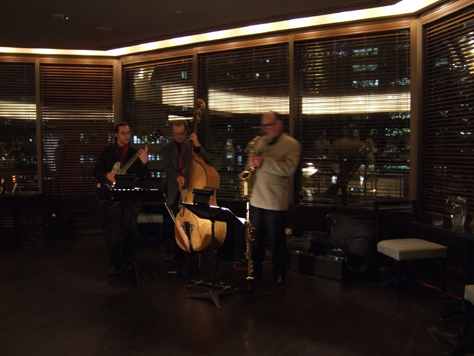Course: The Art of Speaking: Fundamentals for HCI Professionals: Part 1
Presenters: Deborah Boehm-Davis and Lisa Marshall
This half-day course, “The Art of Speaking: Fundamentals for HCI Professionals,” was Part I of a three-part series on public speaking for professionals working in human/computer interaction (HCI). While these courses weren’t really tailored specifically to the needs of HCI professionals, I thought the inclusion of professional-skills development courses on a topic that’s important, though not specific to HCI professionals was a good way of broadening the conference content and meeting the diverse needs of practitioners and academics. Boehm-Davis and Marshall presented an excellent course on the basics of planning, organizing, designing, and delivering a professional presentation.
Preparing for a Presentation
In describing how to distill a body of information into its “essential core,” Boehm-Davis and Marshall suggested that we should consider
- how much time is allotted for the presentation
- what would be of interest to the specific audience
- what is the main message that people should take away from the presentation
- what three to five key ideas best develop the presentation’s main message
- what stories would illuminate its main message and main ideas
Marshall stated, “You need to be very focused on the message you want to convey. … People can easily digest a story.” Then, Boehm-Davis said, “Over time, early on, start thinking of stories.”
For example, according to Boehm-Davis and Marshall, a presenter preparing to present a paper within the context of a panel at a conference should:
- Deduct time for introductions and Q&A from the overall time scheduled for the panel, then divide the remaining time by the number of presenters.
- Determine whether the audience for the panel will likely comprise a variety of practitioners, specialists in a specific aspect of practice, academic researchers, or both practitioners and academics.
- Tailor the content, including stories, to the needs of the audience.
- Prepare a coherent, well-organized presentation.
- Use images to reinforce your message.
- After determining the presentation’s content, consider how to adjust the content
- to reduce its length if the panel starts late
- to avoid repeating information if someone who speaks first covers the same background information
Boehm-Davis and Marshall told us that a talk should “deliver a message, not a paper.” When developing a verbal structure for a talk, ensure that it comprises an
- opening—An opening should be very brief, pithy, interesting, and memorable. Your very first words should capture the audience’s attention. Effective openings include surprising statements or statistics, rhetorical questions, analogies, quotations, and personal stories. Avoid using
the following:
- “a commonplace statement delivered in a commonplace way such as ‘My talk will be on…’ or ‘I was asked to speak about…’”
- “an apologetic statement”
- a joke or anything that isn’t related to your topic
- introduction—An introduction should “bridge from the opener,” explicitly state the topic or purpose of your talk—its main message—and provide a brief outline of your main ideas. “When people learn, they must have a structure into which they can fit the information.” Because different people may absorb either visual or spoken information better, it’s important to have a slide showing your outline. However, a talk that is motivational in nature may not outline where it’s heading.
- body—The body of your talk should introduce each of your main ideas in turn, providing facts and telling stories that support each idea. “To make your talk interesting, use a variety of different types of support” such as examples, statistics, definitions, illustrations, and stories. If your topic is complex or your talk is long, “give summaries along the way,” including only information that supports your conclusions. The appropriate organizational structure for the body of your talk depends on whether its purpose is to inform, persuade, or motivate, as follows:
- informative—Possible structures for informative speeches include topical—with subtopics—chronological, or cause and effect.
- persuasive—Effective structures for persuasive speeches include problem / solution or building from ideas that are commonly accepted to a controversial idea.
- motivational—Motivational speeches often repeat the same key ideas, expressing them in different ways to appeal to people’s emotions.
- conclusion—Your talk’s conclusion should briefly summarize and review its main ideas. Never include new information or future directions in your conclusion.
- closer—A very brief closer should “signal that you’ve come to the end” and communicate the main message you want your audience to remember. “The best way to close is to make a reference to your opening. [Your closer] can be dramatic, rhetorical, emotional, or humorous.” Avoid weak closers such as
- “a commonplace statement delivered blandly such as ‘That about wraps it up,’ ‘In summary…,’ ‘In conclusion…,’ or ‘Thank you very much.’”
- “an apologetic statement like ‘Oh, I forgot one point, sorry; let me explain one more thing.’”
- “solicitation of questions”
Delivering a Presentation
Boehm-Davis and Marshall cited a study that showed, when you deliver a presentation, the impact of your message comes from
- “facial expressions and other body language”—55%
- “vocal quality or tone of voice”—38%
- “content—the actual meaning of the words”—7%
Stressing the importance of non-verbal communication when delivering a presentation, Boehm-Davis and Marshall told us, “Non-verbals speak volumes. Non-verbal communication captures the ear, eye, and mind.” Modes of non-verbal communication include
- eye contact—“Eye contact creates a visual and emotional connection. This connection is critical in North America. Your eyes should be on the audience ninety percent of the time. … Eye contact is important even if you’re reading. … If necessary, look down at your computer, then up to speak.” They described how one should sweep the entire audience with one’s eyes, focusing on different members of the audience or, if that seems too intimidating, looking just above their heads. “Reach everyone.”
- gestures and style—An “animated style” captures people’s attention. “Natural enthusiasm goes a long way. Remember to smile. Use gestures and pointing to support what you’re saying. … Podiums are the death of speakers. … Move your body, not your head. Pivot around the microphone. Come out from behind the podium, moving the microphone with you.” However, you should test this move in advance to avoid feedback. “The size of your gestures depends on the size of the room.” Marshall emphatically stated, “Laser pointers are more distracting than beneficial. Your PowerPoint® slides should focus attention.”
- tone of voice—“Talk conversationally, normally, but in a slightly heightened way.” They quoted Adler and Towne: “Tone, speed, pitch, number and length of pauses, volume, and disfluencies together do a great deal to reinforce or contradict the message our words convey.” Vocal variety is important. “Speed equals enthusiasm (120–160 words per minute).” Your voice should be neither too loud nor too soft. “Conclusions and important points are slower and louder. Remember to breathe. Eliminate the non-words. Pausing is an extremely important technique for gaining attention,” though you should use it sparingly.
Boehm-Davis and Marshall told us to “focus on verbal, not written communication.” According to Boehm-Davis and Marshall, the two key aspects of verbal communication are
- transitions—“Change slides in mid-sentence. Don’t look at a slide, then talk.” Instead, you should first introduce the next slide, then switch. It’s important to signal changes in topic, so your audience doesn’t miss transitions. Effective verbal and non-verbal transitions include “transitional words, a question, key-word repetition, physical movement, pausing, and introducing graphs or charts. … You can move to signal a new point of view.”
- choice of language—“Choose language for the ear, not for the eye.”
Boehm-Davis and Marshall recommended the use of
- “short sentences
- active voice
- first person
- fragments and contractions
- dialogue, not monologue
- concrete, colorful language
- repetition, for important points
- questions and phrases that refocus interest”
- the names or work of audience members, if possible
To better hold an audience’s attention during a presentation, Boehm-Davis and Marshall suggested that, at the beginning of a talk, we offer to send handouts later via email rather than providing handouts then.

